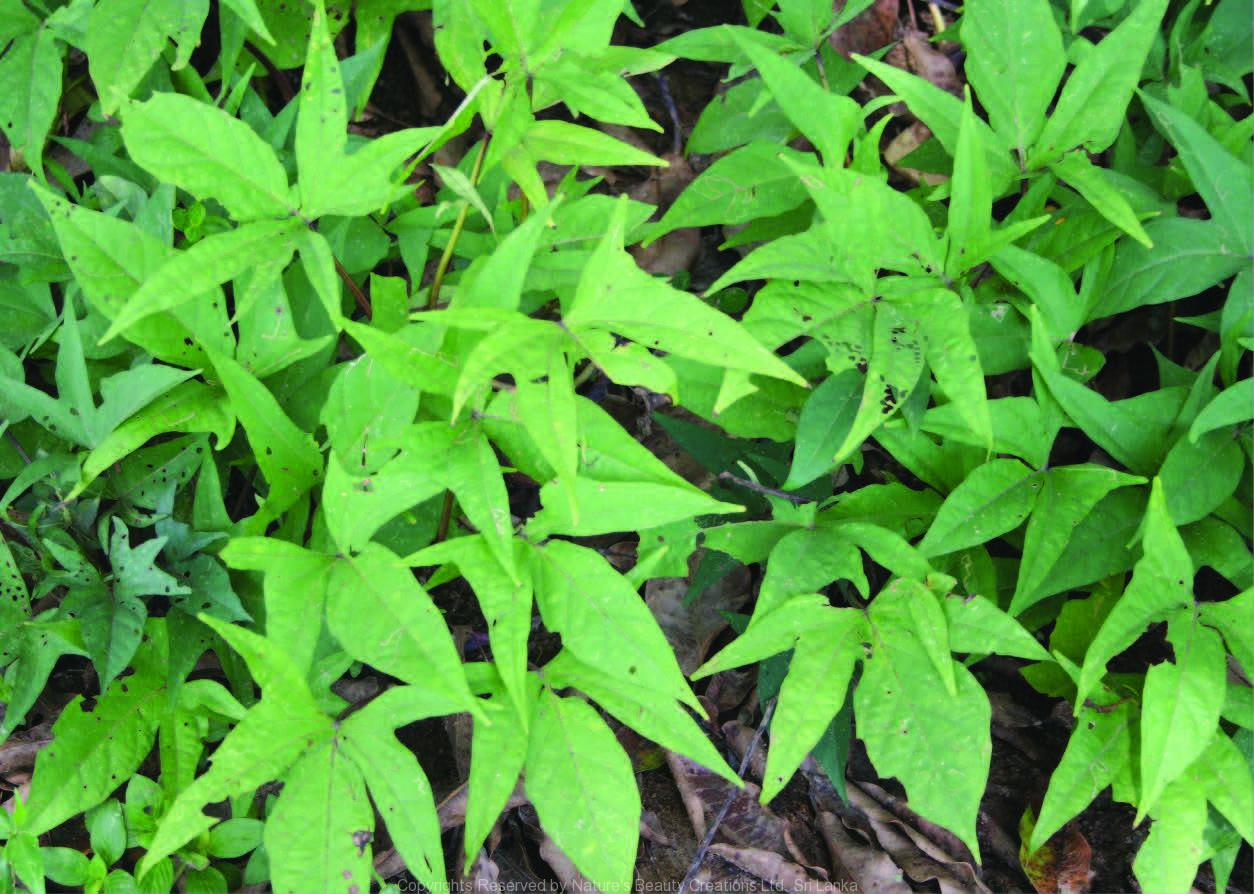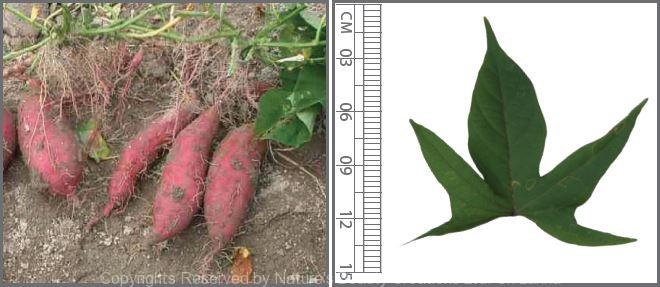

Traditional Knowledge
Useful plant parts :
Tuber and leaf
Uses in traditional medicine :
- Young leaves are eaten as a vegetable and act as a laxative
- Tubers are edible and induce lactation in mothers and cattles
Scientific Research
Chemical constituents:
Anthocyanins: caffeylferulysophoroside derivatives of cyanidin and peonidin from plant; hexadecyl, octadecyl and eicosy esters of p-coumaric acid from latex; phenolic acids: caffeic acid, chlorogenic acids: caffeoylquinic acid derivatives from leaves; soluble protein: sporamin, toxic furanoterpene: Ipomeamarone from tubers
Bioactivity :
Roots and tubers: antioxidative; caffeoylquinic acid derivatives: anticancer; water extracts of storage roots: antimutagenic, antihyperglycaemic; sporamin: protease inhibitor
Clinical:
Tuber extract has shown beneficial effects on plasma glucose, total and LDL cholesterol levels in patients with type 2 diabetes, exhibits antioxidative activity
References : Coxon, D. T. et al., (1975), Ipomeamarone, a toxic furanoterpenoid in sweet potatoes (Ipomea batatas) in the United Kingdom, Food Cosmet Toxicol, 13(1), 87-90. Kusano, S. and Abe, H., (2000), Antidiadetic activity of white skin sweet potato (Ipomoea batatas L.) in obese zucker fatty rats, Biol. Pharm. Bull, 23(1), 23-26. Yeh, K. W. et al., (1997), Functional activity of sporamin from sweet potato (Ipomoea batatas Lam.): a tuber storage protein with trypsin inhibitory activity, Plant Molecular Biology, 33(3), 565-570. Yoshimoto, M. et al., (1999), Antimutagenecity of sweetpotato (Ipomoea batatas) roots, Biosci. biotechnol. Biochem, 36(3), 537-541. Hou, W. C. et al., (2001), Antioxidant Activities of Trypsin Inhibitor, a 33 KDa Root Storage Protein of Sweet Potato (Ipomoea batatas (L.) Lam cv. Tainong 57), Journal of agricultural and Food Chemistry, 49(6), 2978–2981. Kano, M. et al., (2005), Antioxidative Activity of Anthocyanins from Purple Sweet Potato,Ipomoera batatas Cultivar Ayamurasaki, Bioscience, Biotechnology, and Biochemistry, 69(5), 979-988. Kurata, R. et al., (2007), Growth Suppression of Human Cancer Cells by Polyphenolics from Sweetpotato (Ipomoea batatas L.) Leaves, Journal of agricultural and Food Chemistry, 55(1), 185–190. Ludvik, B. H. et al., (2002), The Effect of Ipomoea batatas (Caiapo) on Glucose Metabolism and Serum Cholesterol in Patients With Type 2 Diabetes, Diabetes Care, 25(1), 239-240. Odake, K. et al., (1992), Chemical structures of two anthocyanins from purple sweet potato, Ipomoea batatas, Phytochemistry, 31(6), 2127- 2130. Snook, M. E.et al., (1994), Characterization and quantitation of hexadecyl, octadecyl, and eicosyl esters of p-coumaric acid in the vine and root latex of sweetpotato [Ipomoea batatas (L.) Lam.], Journal of agricultural and Food Chemistry, 42(11), 2589–2595. Suda, I. et al., (2003), Physiological Functionality of Purple-Fleshed Sweet Potatoes Containing Anthocyanins and Their Utilization in Foods, Japan Agricultural Research Quarterly, 37(3), 167–173.
Copyrights Reserved By
Natures Beauty Creations



